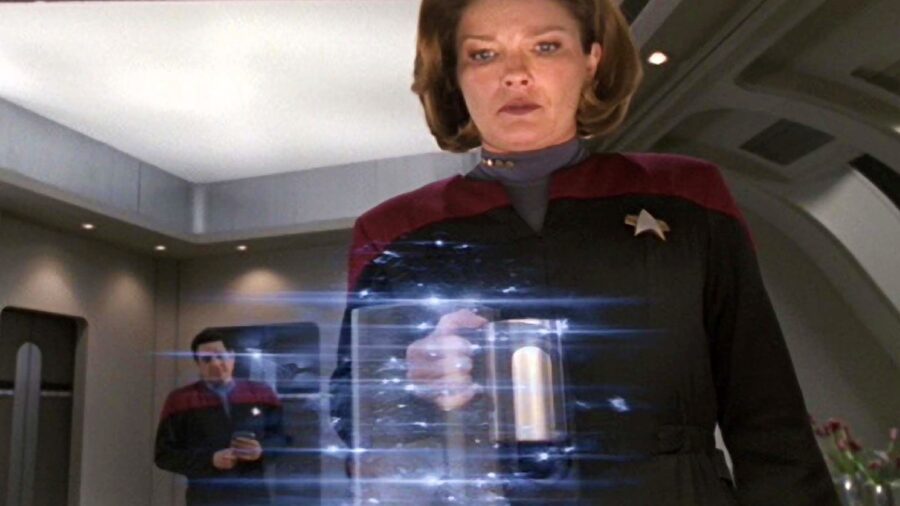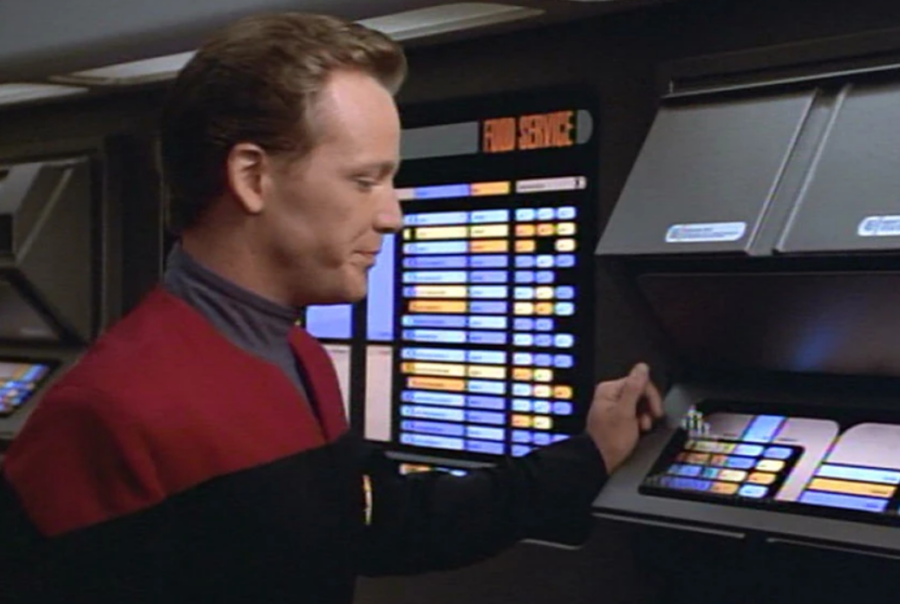How Replicators Work In Star Trek

Star Trek’s replicators use matter-energy conversion technology to make seemingly anything out of thin air, virtually eliminating the problem of scarcity. But how exactly does replicator technology work and what are its limits? To answer those questions, let’s take a look at the principles on which these devices function.
In Star Trek, especially beginning in the 24th century of Star Trek: The Next Generation, we see magic boxes that respond to voice commands to create food and a certain captain’s “Tea, Earl Grey, hot” populating the Enterprise.
But the idea of synthesized food aboard a starship goes back to the Original Series and its “food slots.” Still, it was TNG that first showed us objects—usually food and beverages—materializing before our eyes and began explaining how it worked.
It’s actually a feature of Star Trek’s scientific plausibility that replicators exist or work or that anyone bothers to explain how. Let’s admit at the start, though, that the whole idea is based on some pretty outlandish physics. Not that the venerable sci-fi franchise ever has problems bending the laws of physics.
The plausibility comes into play when Star Trek makes a leap and then builds on that leap in a logical fashion as it does with replicators, which start with transporter technology.
The device breaks matter down at the atomic level and restructures it according to existing or programmed patterns, much the way transporters use pattern buffers to reconstitute transported items and people.

How transporters work is to convert matter to energy and back into matter, and while that technology plays fast and loose with subnuclear particles, it also provides the basic concept of matter-energy conversion. If matter can be converted into energy and restored to its original pattern, why couldn’t that energy be remade as something else entirely?
This is the fundamental principle of Star Trek’s replicators: to take existing matter and convert it into the desired object. This means that when someone has dirty dishes after a replicated meal, instead of washing them, they can just put them into their replicator to later be turned into their next meal.
The device breaks matter down at the atomic level and restructures it according to existing or programmed patterns, much the way transporters use pattern buffers to reconstitute transported items and people.
Of course, Star Trek uses replicators for more than just food, with the matter-energy converters being used to synthesize medicines, clothing, equipment, and much more. Industrial replicators can even be used to create machinery and in construction projects.
They also contain scanners, allowing them to scan the structure of an object in order to learn a new pattern, meaning they can essentially be programmed by people with no technical knowledge.
In true Star Trek fashion, we know a good bit about replicators and their components. Constructed in part of nitrium alloy, they most essentially utilize a matter-energy conversion matrix and pattern buffers, just like transporters. But they also need memory for data storage, waveguides, power converters, and a power supply grid to function properly.
Replicators are constructed in part of nitrium alloy, they most essentially utilize a matter-energy conversion matrix and pattern buffers, just like transporters.
Also in true Star Trek fashion, replicators have their limits. On the Enterprise and, one assumes, other 24th century Starfleet vessels, there are programmed limits such as providing food of minimal nutritional value and not replicating dangerous items such as deadly poisons.
Of course, these programmed limitations can often be overridden by people of sufficient rank, as when only senior officers have access to certain dishes in Star Trek: Lower Decks.
But replicators also have broader functional limitations, struggling to recreate certain complex items such as Borg cortical nodes or bio-neural gel packs, a limitation that serves as a major plot point in the Picard novel The Last Best Hope.
Replicators are programmed with limits such as providing food of minimal nutritional value and not replicating dangerous items such as deadly poisons.

There are also materials with which replicators struggle, like polyduranide and tricyanate, along with certain internal organs. Yes, replicators can make organs too, though we’re told at one point it’s experimental.
Along with frequent complaints about the food they produce, Star Trek’s replicators have their limitations, to be sure. And while much of the economy of the Federation is rooted in the essentially post-scarcity world they provide, they are not entirely able to eliminate the need for other forms of manufacture and food production.
Some people, like Jean-Luc Picard’s brother Robert, refuse to use them and we doubt a replicated bottle of Chateau Picard would taste quite right either.
Still, as Star Trek technologies go, replicators stand among the most plausible advancements of its fictional technology and might have something to do with the rise in 3-D printers and genetically grown meat. We hope they will continue to materialize good ideas for making our world cleaner and less wasteful.












